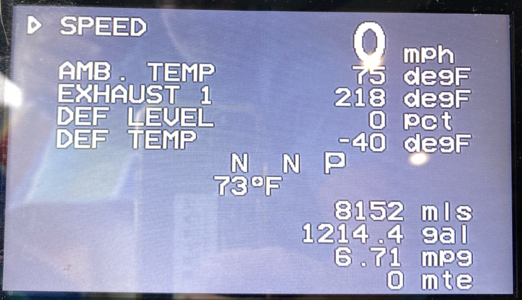Jim
RVF Supporter
- Joined
- Dec 18, 2019
- Messages
- 3,900
- Location
- North Carolina
- RV Year
- 2016
- RV Make
- Newmar
- RV Model
- London Aire 4551
- RV Length
- 45
- Chassis
- Freightliner
- Engine
- Cummins / I6 Diesel Pusher 600HP / 1,950 ft-lbs
- TOW/TOAD
- 2016 Jeep Rubicon
- Fulltimer
- No
There has been a lot of notice given to the DEF header recently, mostly because so many of us are experiencing DEF Header failures and having to replace them. I’m in that group, and during the days that it took me to sort through the workings of this beast, I’ve learned some things that could have saved me considerable money, both in repairs and in lost bookings.
I’m not an expert by any means, so what I’m passing on is what I’ll refer to as “on the job training”, and you need to do your own research before using anything that you read here. Also, the solution that I have chosen may/may not be the best one, but it is allowing me to continue with my trip until I have time to replace the DEF header correctly.
Before the failure, I had no idea what a DEF header was, what it did, or what it looked like. For all I knew, it could be the size of a piano, I had no idea. So for those who are in that same boat, the DEF header is about the size of a thermos, and here is what it does.
The DEF Header
A DEF Header performs several functions including,
The picture below is the top of my DEF header (2016 London Aire) and shows where the fluid goes into the header and where it comes out. To remedy the problem of overheating the DEF, I simple removed the hoses from the header and using a 5/8 brass connector, I connected them together which bypassed the header completely.


I’ll probably cover the entrance/exit connectors on the DEF header, but to be honest, I don’t know if it makes any difference whether I do or not. Also, 4 clamps (two on each side) are probably overkill, but I’m funny that way.
Again, I believe this (temp) solution will work for me, but it may not be the the right solution for everyone. I would rather replace the part and move on, but after 4 days of nonsense from the Ocala Freightliner shop up the road, it was this or an extended stay at the Holliday Inn Express.
I am open to questions and suggestions, so fire away!
To be sure and give credit where credit is due, @Rich W. was instrumental in helping me through this diagnosis.
I’m not an expert by any means, so what I’m passing on is what I’ll refer to as “on the job training”, and you need to do your own research before using anything that you read here. Also, the solution that I have chosen may/may not be the best one, but it is allowing me to continue with my trip until I have time to replace the DEF header correctly.
Before the failure, I had no idea what a DEF header was, what it did, or what it looked like. For all I knew, it could be the size of a piano, I had no idea. So for those who are in that same boat, the DEF header is about the size of a thermos, and here is what it does.
The DEF Header
A DEF Header performs several functions including,
- Measuring the level, or the amount of DEF that is left in the DEF tank,
- Monitoring the temperature of the DEF in the tank,
- Warming the DEF when the outside temperature gets into the freezing levels,
- Monitoring the quality of the DEF in the tank.
The picture below is the top of my DEF header (2016 London Aire) and shows where the fluid goes into the header and where it comes out. To remedy the problem of overheating the DEF, I simple removed the hoses from the header and using a 5/8 brass connector, I connected them together which bypassed the header completely.
I’ll probably cover the entrance/exit connectors on the DEF header, but to be honest, I don’t know if it makes any difference whether I do or not. Also, 4 clamps (two on each side) are probably overkill, but I’m funny that way.
Again, I believe this (temp) solution will work for me, but it may not be the the right solution for everyone. I would rather replace the part and move on, but after 4 days of nonsense from the Ocala Freightliner shop up the road, it was this or an extended stay at the Holliday Inn Express.
I am open to questions and suggestions, so fire away!
To be sure and give credit where credit is due, @Rich W. was instrumental in helping me through this diagnosis.
Last edited:













